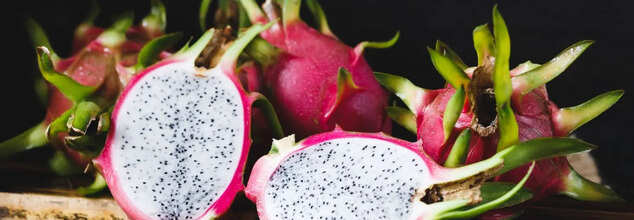
Image Credit: @therealangelinamarie
No Workouts, No Calorie Counting- Mom Of Two Lost 60lbs In 6 Months Without Doing Any Exercise
Losing weight is often associated with calorie counting, grueling workouts, and complex meal plans. But for Angelina Marie, a 30-year-old mother of two from Mississippi, shedding 60 pounds in six months came from doing the exact opposite of conventional weight-loss advice. She embraced the controversial carnivore diet—a meal plan that eliminates everything except animal products and water—and never stepped on a treadmill.
Her journey, initially met with skepticism, led to an astonishing transformation. Today, Angelina is healthier, leaner, and more confident than ever—all without a single cardio session.
Angelina’s weight had steadily climbed to 209lbs after years of struggling with processed foods and carb-heavy meals. Feeling desperate, she stumbled upon the carnivore diet while researching online. Unlike conventional wisdom, which promotes balance and variety, the carnivore diet eliminates fruits, vegetables, grains, and legumes entirely, focusing solely on meat, seafood, eggs, and dairy.
Determined to try something new, Angelina stocked her fridge with steaks and bacon, cutting out carbs overnight. Within just seven days, she had already lost 11lbs—a result that left her stunned. As weeks passed, the pounds continued to melt away.
"I couldn't believe the scale," she recalls. "It felt like my body was resetting itself."
Unlike traditional weight-loss programs that emphasize portion control and calorie counting, Angelina followed a simple yet structured eating plan:
Fasting until midday: Her first meal of the day usually consisted of scrambled eggs with bacon or scallops wrapped in bacon.
Dinner around 6 PM: This typically included a ribeye steak, pork chops, or chicken wings.
Snacking when hungry: She opted for beef jerky or meat sticks instead of carb-heavy snacks.
Hydration: Drinking ample water was crucial, and she also included high-quality electrolytes to prevent deficiencies.
No Exercise, Just Results
Contrary to popular belief, Angelina didn’t rely on intense workouts to achieve her transformation. In fact, she actively avoided exercise at the start of her weight-loss journey. Only after reaching her goal weight did she incorporate weightlifting—but solely to build muscle, not to lose more fat.
Interestingly, as she started strength training, she even gained a few pounds due to muscle mass increase, reinforcing that her initial weight loss was purely diet-driven.
Adopting an all-meat diet wasn’t entirely smooth sailing. Angelina warned her followers about the ‘carnivore flu’, a temporary condition experienced when the body adjusts to an extreme shift in diet.
"Your body isn't used to running on just fats and proteins while completely eliminating carbs," she explains. "Headaches, nausea, and diarrhea can happen, but they go away."
To counter these effects, she emphasized the importance of red meat over lean cuts, stating that fattier meats provide essential nutrients that help the body adjust more quickly.
Beyond shedding 62 pounds, Angelina experienced several unexpected health improvements:
- Reduced bloating: She no longer felt sluggish or bloated after meals.
- Clearer skin: Her complexion improved significantly.
- Better relationship with food: She learned to eat intuitively—only when hungry and stopping when full.
- Mental clarity and energy: Many carnivore diet followers report enhanced focus and stable energy levels.
Carnivore Diet: Is It Safe?
The carnivore diet is an extreme form of the ketogenic diet (keto), which forces the body into ketosis—a metabolic state where fat, rather than carbohydrates, becomes the primary energy source.
While advocates praise its benefits, research presents a mixed picture. Studies suggest that excessive consumption of red meat could increase risks of:
Heart disease: A study from Oxford University found that every additional 50 grams of red meat per day increases heart disease risk by 18%.
Type 2 diabetes: Harvard researchers found that people consuming two servings of red meat per week had a 62% higher risk of developing diabetes over time.
High cholesterol levels: Extreme cases have shown cholesterol so high that it physically leaked from the skin.
Nutritional deficiencies: The lack of fiber and vitamin C in an all-meat diet can lead to conditions like scurvy and gut health issues.
Despite these concerns, some experts argue that not all meat is created equal. Many studies fail to distinguish between processed meats (sausages, deli meats) and whole-food options like steak and fresh fish, which may not carry the same risks.
Should You Try the Carnivore Diet?
Health professionals remain divided on the long-term sustainability of the carnivore diet. While it may deliver rapid weight loss, experts strongly recommend incorporating nutrient-dense foods like vegetables and whole grains for overall well-being.
However, for individuals struggling with obesity, food cravings, or insulin resistance, a short-term carnivore diet could act as a reset before transitioning to a more balanced plan.
Angelina’s success story challenges traditional weight-loss norms. While the carnivore diet may not be for everyone, her journey highlights the importance of finding what works for your body—even if it contradicts mainstream advice.
"Now, I eat when I'm hungry, stop when I'm full, and focus on how I feel rather than what the scale says," she says. "This diet gave me my life back."
As the debate on the carnivore diet continues, one thing remains clear—what works for one person may not work for another. Before making drastic dietary changes, consulting a healthcare professional is always advised.

(Credit-Canva)
You May Be Ruining Your Healthy Salad With These Mistakes!
Whenever a healthy diet is brought up, the first thing people think of is salads. Salads are fresh and very good for health, filled with assorted vegetables. To make salads more appealing, people add other ingredients like dressing, croutons or other snacks for taste. A survey conducted by OnePoll revealed that about 62% of the 2000 people who took the poll said that salads are a regular part of their diet.
But that does not prove that most people are leading a healthy lifestyle. According to Center of Disease Control and Prevention (CDC) more than two out of five adults in US have obesity. It also accounted for nearly 173 billion dollars in medical bills in 2019. So, what could be going wrong? One question that pops up is how the salads were prepared, while it is great way to consume necessary nutrition, there are many things that can go wrong when you are preparing a salad. Here are some common mistakes that are ruining your perfectly healthy salad.
Not adding enough protein
When you make a salad into a full meal, you need more than just veggies. The Cleveland Clinic explains that protein helps you feel full and satisfied for longer. If you just eat a bowl of lettuce and tomatoes, you'll probably be hungry again in an hour. Adding chicken, fish, eggs, or beans makes your salad a real meal. Try to use plant-based protein and fats, they are generally healthier than processed meats that can have a lot of unhealthy fats and salt.
Adding too much dressing
Dressing makes your salad taste good, and when it tastes good, you're more likely to eat more of those healthy vegetables. But, be careful, too much dressing can add a lot of extra calories. You don't have to skip dressing altogether. Try mixing your favorite dressing with vinegar to cut down on calories. And remember, a little bit of healthy oil in your dressing actually helps your body absorb important vitamins.
Adding too many croutons
Croutons can add a nice crunch to your salad, but they're often full of carbs, salt, and unhealthy fats. According to the U.S. Department of Agriculture (USDA) croutons have 10 grams of carbs and 99 mg of sodium. They're full of healthy fats, protein, and fiber. Roasted chickpeas are another great option. Kale chips or dried seaweed are low in calories but add a lot of nutrients. You can also use whole-grain crackers for a healthy crunch.
Not adding various vegetables
Eating the same salad every day can get boring. Plus, eating a variety of foods gives you more vitamins and minerals. Try adding different colored vegetables like bell peppers or tomatoes. You can also add nuts, dried fruits, or fresh fruits. And don't forget about herbs and spices! They can add a lot of flavor to your salad.
Choosing light green vegetables
Iceberg lettuce is okay, but darker greens like spinach and kale are much better for you. They have more vitamins, minerals, and fiber. Dark leafy greens can help protect you from diseases like diabetes and heart disease. According to USDA data a cup of spinach has about 30 mg of calcium, while iceberg lettuce only has about 10 mg. If you don't like greens, you can use other vegetables like cabbage or Brussels sprouts.
Food Safety
It's important to keep your salad clean and safe. Always wash your hands before making your salad. Check the expiration dates on your packaged produce and make sure your vegetables look fresh. Store your greens in the crisper drawer of your fridge. As for washing bagged greens, studies show that just rinsing them under running water doesn't remove much bacteria.
How To Make A Well-Rounded Salad
To make a good salad, use two parts vegetables, like greens and chopped veggies. Add one part carbs, like quinoa or sweet potatoes. Then, add protein, like eggs or beans. Don't forget healthy fats, like avocado or an oil-based dressing. Add some crunchy bits, like nuts or seeds. And finally, add some flavor, like herbs or spices. This formula will help you make a delicious and healthy salad.

Credit: Canva
Are You Eating Your Dragonfruit Wrong? Here's How To Do It
Dragon fruit, also known as pitaya, has gained immense popularity, appearing in smoothie bowls, grocery stores, and social media feeds. With its vibrant colour and exotic appearance, it’s easy to see why this fruit captures attention. But beyond its eye-catching looks and Game-of-Thrones-worthy name, does it live up to the hype as a nutritional powerhouse?
What Exactly Is A Dragon Fruit?
Dragon fruit comes from a cactus plant native to Central and South America. Its outer skin resembles a large cactus pear, covered in green-tipped "scales." The red variety boasts a bright pink exterior, while the yellow variety is a striking golden hue with smaller scales. The real surprise, however, lies inside—juicy white, pink, or purple flesh speckled with tiny, edible seeds. Its flavor is a refreshing blend of pear and kiwi, with a similarly soft, juicy texture when ripe.Nutritional Benefits Of Dragon Fruit
Like most fruits, dragon fruit provides an impressive array of nutrients with relatively few calories. A 3.5-ounce (100-gram) serving contains just 82 calories while delivering a good dose of magnesium (14 mg, comparable to half a cup of cooked kale), potassium (206 mg, roughly half a banana), and 2 grams of fiber, similar to one kiwi.
Antioxidants And Health Benefits
Dragon fruit is often praised for its antioxidant content, which includes vitamin C, selenium, and flavonoids like anthocyanins and carotenoids. While it may not be the most concentrated source of these compounds, it provides a diverse mix. Diets rich in antioxidant-packed fruits and vegetables are linked to lower risks of chronic inflammatory conditions such as heart disease, diabetes, and certain cancers.But does this mean dragon fruit qualifies as a superfood? While no single food supplies every essential nutrient, Teresa Fung, a registered dietitian and adjunct professor at Harvard T.H. Chan School of Public Health, told Healthline that that dragon fruit is a healthy addition to the diet, but it is not magic.
Perhaps the most significant benefit of dragon fruit is the variety and color it brings to the diet. Increasing fruit intake is a common challenge, with statistics showing that only 12% of Americans meet the U.S. Dietary Guidelines’ recommendation of 1.5 to 2 cups of fruit daily. If dragon fruit encourages people to consume more fruit, experts say it’s a great choice.
How To Choose And Eat Dragonfruit
Dragon fruit is in season from June through September. When selecting fresh fruit, look for one that feels heavy for its size, free of bruises or shriveling. If unripe, let it sit on the counter until it becomes slightly soft to the touch.According to Dr Fung, frozen dragon fruit is an excellent alternative, as it’s harvested at peak ripeness and retains its nutrients. When purchasing frozen varieties, opt for brands without added sugars.
Simple Ways To Enjoy Dragonfruit
Eating dragon fruit is simple—just cut it in half and scoop out the flesh with a spoon. Alternatively, peel and slice it into rounds or cubes. Here are some delicious ways to incorporate it into your diet:- Make a dragon fruit salsa with chopped onions, cilantro, and lime juice (plus mango or papaya for extra flavour).
- Blend into smoothies using fresh or frozen dragon fruit.
- Puree and freeze into refreshing popsicles.
- Use thin slices as a garnish to elevate any dish.

Image Credits: Canva
Eating Peanut Butter Can Help You Lose Weight, But Not If You’re Making These Mistakes
Crunchy or smooth, peanut butter has long been a favorite snack in all our 'healthy' diets. Whether spread on toast, blended into a smoothie, or mixed into oatmeal, it’s a go-to comfort food, especially if you got into fitness for the gains. But for those looking to lose weight, peanut butter often raises concerns due to its high calorie and fat content. However, research suggests that incorporating peanut butter into a balanced diet may actually support weight loss—if consumed correctly.
A study in the October 2018 issue of the European Journal of Nutrition looked at almost 375,000 individuals and concluded that those who habitually consumed peanuts or other nuts packed on fewer pounds after five years than those who didn't. In a few instances, even nut-eaters lost weight. Kids who ate peanuts and peanut butter were found to have lower body weights and improved overall diet by a 2013 Nutrition Research study.
Peanut butter is rich in fiber, healthy fats, and protein—three essential nutrients that suppress hunger, increase satiety, and fuel metabolism. Yet, there are some pitfalls individuals take when introducing peanut butter into their diets that may ruin their weight-loss plan.
Why Peanut Butter Can Be Good for Weight Loss?
Nutrient-rich and extremely versatile, peanut butter is a food far more than its delicious spread suggests. It contains a wealth of essential vitamins, minerals, and macronutrients, so it is a highly desirable part of a balanced diet. In 100 grams of peanut butter, there is:
- Calories: 588
- Protein: 21.9 grams
- Fats: 49.5 grams (predominantly monounsaturated and polyunsaturated fats)
- Carbohydrates: 24 grams
- Dietary Fiber: 5.7 grams
In addition to these macronutrients, peanut butter is also a rich source of magnesium, phosphorus, zinc, niacin, and vitamin B6, all of which are essential to metabolism, immune function, and overall health. Notably, although it is rich in fat, most of the fat content is composed of heart-healthy unsaturated fats that are able to lower cholesterol levels and maintain heart health.
Common Mistakes That Ruin Your Weight Loss While Eating Peanut Butter
Though peanut butter may be a helpful tool in the management of weight, using it to commit some of these very common mistakes could cause unwanted weight gain instead of weight loss.
Mistake 1: Using Peanut Butter with Added Salt and Sugar
Not all peanut butter is the same. Most commercial brands have added sugar and salt, which can be detrimental to weight loss. Excessive sodium can cause water retention and bloating, and too much sugar adds unnecessary calories and increases cravings.
What to do instead: Use natural peanut butter with few ingredients—preferably only peanuts (and perhaps a little salt). Steer clear of versions containing added hydrogenated oils, sugars, and artificial preservatives.
Mistake 2: Eating It Straight From the Jar
We've all been there—taking a spoonful (or three) of peanut butter right out of the jar. But it's all too easy to overestimate how much you're taking in. Two tablespoons is a typical serving, which has approximately 190 calories. When you eat it right out of the jar, it's all too easy to take several servings and add a huge number of calories to your diet.
What to do instead: Measure your portions carefully. Stick to two tablespoons per serving and use a spoon rather than eating straight from the container.
Mistake 3: Always Pairing Peanut Butter With Jelly or Chocolate
Traditional peanut butter combinations such as PB&J sandwiches or chocolate and peanut butter can be tasty, but they are full of secret sugars. Regular jelly is full of added sugars, and chocolate-flavored peanut butter snacks can easily transform a nutritious snack into a calorie-laden treat.
What to do instead: Combine peanut butter with better options such as fresh fruit, whole-grain bread, or Greek yogurt. You can also experiment by combining it with other savory foods like soy sauce, lime juice, and ginger as a healthy salad dressing.
How to Add Peanut Butter Into a Healthy Diet?
To maximize the weight-loss benefits of peanut butter, patience and restraint are important. Here are some intelligent ways to have it without ruining your progress:
- Make it a protein boost: Spread peanut butter on whole-grain bread or add it to oatmeal to satisfy you longer.
- Create a high-protein dip: Combine peanut butter with Greek yogurt for a nutrient-rich fruit dip.
- Boost your smoothies: Mix peanut butter with banana, spinach, and almond milk to make a nutritious smoothie.
- Mix with homemade energy bites: Mix peanut butter with oats, chia seeds, and honey for a snack that is good for you.
- Add to the top of meals: Spread a thin layer on rice cakes, or drizzle over roasted vegetables for a flavor boost.
Is Peanut Butter Good for Muscle Building and Weight Maintenance?
If your aim is to gain muscle weight instead of weight loss, peanut butter can still be an important part of your diet. It delivers a healthy amount of protein—eight grams per two-tablespoon serving—albeit not as dense as others such as chicken, fish, or protein bars. Its calorie density, though, does make it a suitable choice for when one is required to take more in without taking on large quantities of food.
For athletes and bodybuilders, peanut butter is a great source of energy. The mix of protein, good fats, and carbohydrates gives the body sustained fuel for exercise and muscle repair.
Peanut butter can be a great help in weight reduction, muscle development, and health overall—if taken properly. Opting for the right kind, keeping portion control in check, and combining it with nutrient foods are key to getting the best out of it.
© 2024 Bennett, Coleman & Company Limited

